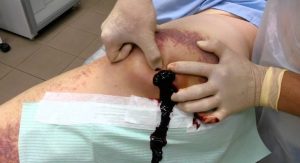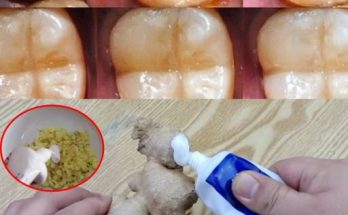
Bursitis
Bursitis is a painful swelling, usually around your joints. It’s common in the shoulders, elbows, knees and feet. You’re more likely to get it if you have a job or hobby that puts a lot of stress on your joints.
Overview
What is bursitis?
Bursitis is painful swelling in a small, fluid-filled sac called a bursa. Bursae (the plural of bursa) cushion spaces around bones and other tissue. They’re like bubble wrap that protects structures throughout your body. Bursae cushion the spaces between bones and your:
Bursitis happens when a bursa becomes irritated and swells. The most common causes of bursitis are overuse and putting too much pressure on a bursa. The pain from an inflamed bursa may develop suddenly or build up over time.
Types of bursitis
There are more than 150 bursae in your body. Bursitis can affect any of them. You’re most likely to develop bursitis in joints you use for repetitive motions or in places you put a lot of pressure, including your:
- Shoulders (subacromial bursitis).
- Elbows (olecranon bursitis — sometimes called miner’s elbow or barfly’s elbow).
- Knees (prepatellar bursitis — housemaid’s knee).
- Feet (especially near your heel, big toe or the ball of your foot).
- Hips (iliopectineal or trochanteric bursitis).
- Butt (ischial bursitis or weaver’s bottom).
Healthcare providers might refer to different types of bursitis with a specific name, but they’re all the same issue — swelling in and around a bursa.
What are bursitis symptoms?
The most common symptoms of bursitis are:
- Pain, especially when you’re moving the affected part of your body.
- A limited range of motion (how far you can move a body part).
- Swelling.
If you have an infection that’s causing bursitis, you might have other symptoms, including:
What causes bursitis?
Repetitive motions — like a pitcher throwing a baseball or lifting heavy boxes at work — commonly cause bursitis. Spending time in positions that put pressure on a specific part of your body (such as kneeling) can cause it, too.
It’s less common, but injuries and infections can cause bursitis, as well.
Activities that can lead to bursitis include:
- Carpentry.
- Gardening and raking.
- Painting.
- Poor posture or a poorly positioned joint or bone (due to different leg lengths, bone spurs, or arthritis in a joint).
- Scrubbing.
- Shoveling.
- Playing sports like tennis, golf and baseball.
- Playing an instrument.
Bursitis risk factors
Anyone can experience bursitis. People who are more likely to develop it include:
- Athletes.
- People who do physical work or manual labor.
- Musicians.
People with certain health conditions have a higher risk of bursitis, including:
- Arthritis (especially inflammatory arthritis like gout and psoriatic arthritis).
- Diabetes.
- Thyroid disease.
Diagnosis and Tests
How is bursitis diagnosed?
A healthcare provider will diagnose bursitis with a physical exam. They’ll ask you about your symptoms and examine the area around your affected body part. Tell your provider what you were doing before you noticed symptoms for the first time and if your job or a hobby requires you to do a repetitive motion.
What tests are done to diagnose bursitis?
Your provider might use some tests to diagnose bursitis, including:
- X-rays to rule out other conditions.
- Ultrasound or MRI (magnetic resonance imaging) to detect swollen bursae.
- A blood test to look for infection.
- An aspiration (taking a sample of fluid) of your affected bursa if they think it’s infected.
Management and Treatment
What is the best way to treat bursitis?
Usually, rest is all you’ll need to treat bursitis. Avoid the activity or positions that irritated your bursa.
Taking a break from activities that put pressure on that part of your body will give it time to heal and prevent further injury. Ask your provider how long you’ll need to rest and avoid physical activities.
Your provider might suggest at-home treatments to reduce the pain and swelling while your bursa heals:
- Elevate the injured area.
- Take over-the-counter (OTC) pain relievers like ibuprofen, naproxen or acetaminophen. Don’t take pain relievers for more than 10 days in a row without talking to your provider.
- Ice the area. Apply a cold compress or ice packs wrapped in a thin towel to the area for 15 minutes at a time, a few times a day.
- Apply heat (like a heating pad or a hot water bottle wrapped in a towel). Your provider might suggest alternating ice and heat.
- Wear a splint, sling or brace to keep the injured area supported.
Most cases of bursitis heal on their own with rest and at-home treatments. But your provider may recommend additional treatment options, including:
- Antibiotics if you have an infection.
- Physical therapy to increase your range of motion.
- Occupational therapy to learn how to move in ways that don’t stress the area.
- Corticosteroid injections to decrease inflammation and pain.
- Surgery to resect (remove) your bursa if other treatments aren’t effective and you’re still experiencing symptoms for six months or longer.
Prevention
How can I prevent bursitis?
The best way to prevent bursitis is to avoid overusing your body. To prevent bursitis:
- Learn the proper posture or technique for sports or work activities.
- Ease into new exercises or activities to avoid injury.
- Avoid sitting or kneeling too long. These positions put a lot of pressure on your joints.
- Use cushions and pads when you kneel or lean on your elbows.
- Take breaks if you’re doing a repetitive task.
Outlook / Prognosis
How long does bursitis usually last?
Bursitis is usually short-lived. Most people heal within a few weeks. Follow your healthcare provider’s recommendations and don’t resume physical activities before your bursa has healed. Even if your pain improves, putting pressure or stress on your bursa before it’s completely healed increases your risk of reinjuring it.
Will I need to miss work or school while I’m recovering from bursitis?
If a repetitive motion that’s part of your job or studies causes bursitis, you might need to miss work or school while you’re recovering. Tell your provider about your usual routine and they’ll explain which parts of it you need to modify or take a break from while you’re resting your injured bursa.
What happens if bursitis is left untreated?
The longer you put pressure or additional stress on an injured bursa, the longer it’ll take to recover. It also increases your risk of chronic bursitis (bursitis that comes and goes in the same area).
Chronic bursitis
You can get bursitis more than once in the same area. When you have repeated bursitis episodes, it’s considered a chronic (long-lasting) condition. Bursitis may come and go. The same kind of irritation that caused the original inflammation can trigger a new episode. Repeated flare-ups may damage the bursa and reduce your mobility in that joint.
Living With
When should I see my healthcare provider?
Visit a healthcare provider if you have any of the following symptoms:
- Pain that interferes with your day-to-day activities.
- Soreness that doesn’t get better in a few days with at-home treatment.
- Bursitis that comes back (recurs).
- Fever.
- Discoloration or redness, swelling or a feeling of warmth in an injured area.
What questions should I ask my doctor?
- Which type of bursitis do I have?
- Will I need any tests?
- Which treatments will I need?
- How long do I need to rest?
- When can I resume sports or other physical activities?
Additional Common Questions
What is the difference between bursitis and arthritis?
Arthritis and bursitis both affect your joints. Bursitis is usually a short-term issue that’s caused by overusing or putting excess stress on a bursa around one of your joints. It doesn’t create long-lasting damage unless you continue to stress the area.
Arthritis happens when cartilage in a joint breaks down over time. Arthritis is usually a long-term condition that you’ll need to manage for the rest of your life.
What is the difference between bursitis and tendinitis?
Bursitis and tendinitis are both painful conditions that happen when tissue in your body is irritated and swells. Bursitis is inflammation in one or more of your bursae.
Tendinitis is inflammation or irritation of a tendon. Tendons are pieces of connective tissue between muscles and bones. Tendinitis can be either acute (short-term) or chronic (long-term).
Doing a repetitive activity can cause both bursitis and tendinitis — like doing the same motion for a sport, or using the same part of your body for physical work frequently.
A note from Cleveland Clinic
Bursitis is painful, and it can be frustrating to learn your job or hobby you love caused an injury inside your body. The good news is that bursitis is usually preventable. The first step is figuring out which movements caused the irritation.
Your healthcare provider will help you find treatments that let your injured bursae heal and solutions to prevent bursitis in the future. Don’t rush your recovery — rest for as long as your provider suggests. It might be annoying to skip sports or an activity that you’re used to doing every day, but it’s important to give your body all the time it needs to heal.



